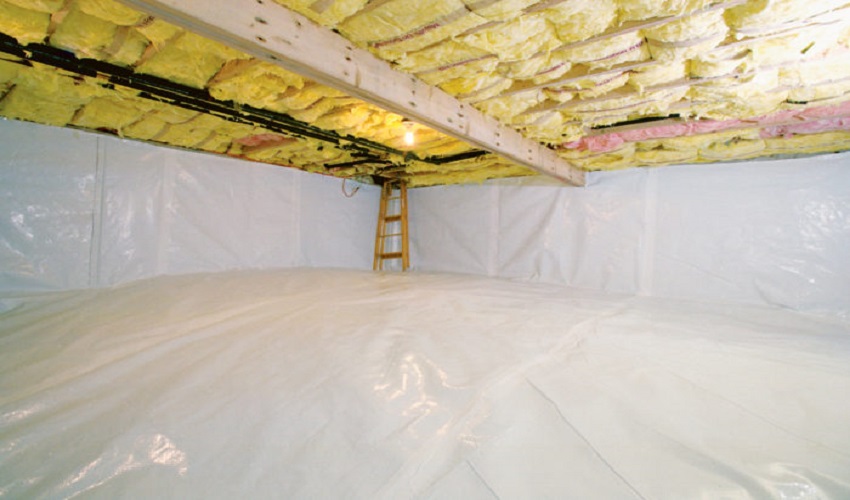Crawl space insulation helps keep your home warm in winter and cool in summer. It also keeps moisture from entering your home, causing mold, mildew, and other problems.
Fiberglass batts are an excellent choice for insulating crawl space walls. They should be installed with a paper vapor barrier facing the heated living area and tightly fit between the floor joists.
Fiberglass Batts
Fiberglass batts are a fantastic option for thermal and acoustic barriers and are frequently used in attics, floors, and crawlspace insulation. They are available with or without facing (paper or aluminum foil), and they aid in halting the evaporation of water vapor and the loss of interior heat.
Fiberglass batts are available in different thicknesses, generally from three to six inches. Thicker batts will have a higher R-value per inch than thinner ones.
The R-value refers to the level of resistance to heat flow an insulating material offers. A higher R-value will result in better energy efficiency and lower utility bills.
In a typical home, fiberglass batts may be used between floor joists in a crawl space, or they could be placed around the perimeter of foundation walls that are sealed to the outside. Blown-in cellulose and spray foam can also be used as insulation in finished walls.
Cellulose Batts
Cellulose batts are a type of insulation that is commonly installed in walls. They come in different sizes and have a paper backing on one side. They’re usually blown into wall cavities or used as loose-fill insulation (a type of “blow-in” insulation).
Fiberglass batts are also popular, but they’re not recommended for vented crawl spaces because they leak air and can be a breeding ground for mildew and mold. They’re also more brittle than other types of insulation and can cause damage to walls or other structures when they’re not handled properly.
Cellulose batts are made from recycled newspapers and have been chemically treated as non-flammable. They’re also fire-safe and meet all building codes.
Closed-Cell Spray Foam
Closed-cell spray foam insulation is famous for insulating vented crawl space ceilings. It stops air leakage while providing high insulating value and can be applied from small cans or large containers.
It’s also used to insulate the rim joists of a crawl space, which is where most energy-wasting air leakage takes place. When installed correctly, it provides a solid moisture barrier and can prevent mold growth in the walls of a crawl space.
The downside to closed-cell spray foam is that it only expands slightly as applied and doesn’t fill a space, leaving some gaps. Getting a professional to use this product in your home is a good idea.
Rigid foam insulation is often used similarly to spray foam and can be shaped into stuff panels that are attached directly to the woos of a crawl space wall. It’s strong insulation, offers a higher R-value per inch than fiberglass batts, and can stop air leakage when joints between rigid foam panels are taped.
Rigid Foam
Rigid foam is an excellent choice for crawl space insulation. It is durable, provides an air and moisture seal, and works well against various materials.
You can hire an insulation professional if you need more time, money, or skill to tackle the job. It will save you a lot of hassle and make it easier to get a quality job done.
You can also use rigid foam to construct other structures, such as insulated concrete forms (ICFs) and structural insulated panels (SIPs). ICFs and SIPs have high R-values and are much more energy efficient than traditional stud-built structures.
Whether or not to use rigid foam depends on the specific needs of your project. A good contractor will know the best type to use based on your home’s construction and the climate where you live. There are several types of rigid foam, including expanded polystyrene (EPS), extruded polystyrene (XPS), and polyisocyanurate (polyiso). Each one is slightly better than the other in certain circumstances.




